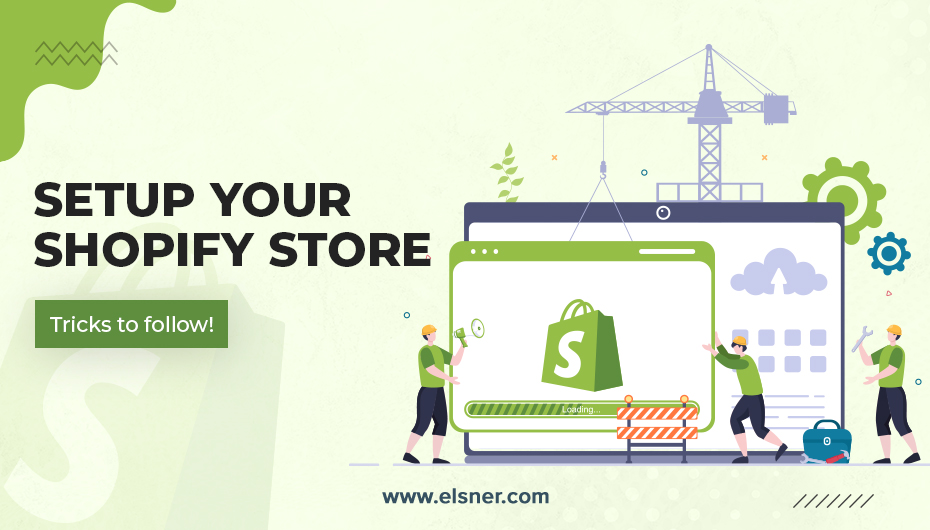Quit Your Day Job! Here’s How to Build a Shopify Store That Makes Money While You Sleep
In today’s fast-paced world, many people dream of breaking free from the 9-to-5 grind. The desire for financial independence and the ability to work on your terms has led to a surge in online entrepreneurship. One of the most popular platforms for starting an online business is Shopify. With its user-friendly interface and powerful features, you can build a store that generates passive income while you sleep. In this blog post, we’ll explore the steps to create a successful Shopify store and provide tips to help you quit your day job for good.

Why Choose Shopify?
Before we dive into the steps, let’s discuss why Shopify is the go-to choice for many entrepreneurs:
- Ease of Use: Shopify is designed for everyone, from tech-savvy individuals to complete novices. Its intuitive interface makes it easy to set up a store without extensive coding knowledge.
- Customizable Templates: Shopify offers a wide range of customizable templates, allowing you to create a unique store that reflects your brand.
- Payment Gateways: Shopify integrates with various payment gateways, making it easy to accept payments from customers around the world.
- Scalability: Whether you’re starting small or have big ambitions, Shopify can grow with your business. You can easily add new products, manage inventory, and scale your marketing efforts.
- 24/7 Support: Shopify provides 24/7 customer support, ensuring you can get help whenever you need it.
Identify Your Niche

The first step in building a successful Shopify store is to identify your niche. A niche is a specific market segment you want to target. Choosing the right niche is crucial for your store’s success. Here are some tips to help you identify your niche:
- Passion and Expertise: Choose a niche that you’re passionate about or have expertise in. This will make it easier for you to create content, engage with customers, and market your products.
- Market Demand: Use tools like Google Trends, Ubersuggest, or SEMrush to research market demand for your niche. Look for keywords that show strong search volume and low competition.
- Profitability: Analyze potential profit margins for your chosen niche. Consider product sourcing, pricing strategies, and shipping costs to ensure you can make a profit.
Research Your Competitors

Once you’ve identified your niche, it’s essential to research your competitors. Understanding what works and what doesn’t in your chosen market can help you refine your business strategy. Here are some steps to conduct competitive research:
- Identify Competitors: Use tools like SimilarWeb or Ahrefs to find direct competitors in your niche. Analyze their websites, product offerings, and marketing strategies.
- Evaluate Their Strengths and Weaknesses: Take note of what your competitors are doing well and where they fall short. Look for gaps in the market that you can fill.
- Learn from Their Marketing Strategies: Observe how your competitors market their products. Analyze their social media presence, content marketing efforts, and paid advertising campaigns.
Set Up Your Shopify Store

Now that you’ve identified your niche and researched your competitors, it’s time to set up your Shopify store. Here’s a step-by-step guide:
- Sign Up for Shopify: Go to the Shopify website and sign up for a free trial. You’ll need to provide your email address and create a password.
- Choose a Domain Name: Select a domain name that reflects your brand and is easy to remember. You can purchase a domain through Shopify or use an existing one.
- Select a Theme: Browse through Shopify’s theme store and choose a template that suits your brand’s aesthetics. Customize the theme to match your branding elements, such as colors, fonts, and logos.
- Add Products: Click on “Products” in your Shopify dashboard and start adding products. Include high-quality images, detailed descriptions, and pricing information.
- Set Up Payment Gateways: Configure payment gateways to accept payments from customers. Shopify supports various payment methods, including credit cards, PayPal, and Apple Pay.
- Configure Shipping Settings: Set up your shipping options, including shipping rates and delivery methods. You can choose to offer free shipping, flat-rate shipping, or calculated shipping based on the customer’s location.
- Launch Your Store: Once you’ve set everything up, it’s time to launch your store! Test all features to ensure everything works smoothly before going live.
Create a Marketing Strategy

After launching your store, the next step is to develop a marketing strategy to drive traffic and sales. Here are some effective marketing tactics to consider:
- Search Engine Optimization (SEO): Optimize your store for search engines by incorporating relevant keywords into your product descriptions, titles, and meta tags. Use tools like Yoast SEO or Moz to analyze your SEO performance.
- Content Marketing: Create valuable content related to your niche, such as blog posts, how-to guides, and videos. This not only helps with SEO but also establishes your brand as an authority in your industry.
- Social Media Marketing: Leverage social media platforms to promote your products and engage with your audience. Create visually appealing posts and run targeted ads to reach potential customers.
- Email Marketing: Build an email list and send regular newsletters to your subscribers. Use email marketing platforms like Mailchimp or Klaviyo to automate your campaigns and track performance.
- Influencer Marketing: Collaborate with influencers in your niche to promote your products. Influencers can help you reach a larger audience and build trust with potential customers.
Automate and Optimize

To make money while you sleep, you need to automate your store’s operations as much as possible. Here are some strategies to help you achieve this:
- Use E-commerce Automation Tools: Invest in e-commerce automation tools that streamline your processes. Tools like Oberlo can help you find and import products directly into your store, while apps like Orderhive can manage inventory and orders.
- Implement Abandoned Cart Recovery: Use Shopify’s abandoned cart recovery feature to automatically send reminders to customers who leave items in their cart. This can help recover lost sales.
- Optimize Customer Support: Consider using chatbots or automated responses for customer inquiries. This ensures customers receive prompt assistance, even when you’re not available.
- Analyze Data and Adjust Strategies: Regularly analyze your store’s performance using Shopify Analytics and Google Analytics. Use this data to adjust your marketing strategies, optimize product listings, and improve the overall customer experience.
Scale Your Business

Once your store is generating consistent income, it’s time to scale your business. Here are some tips for scaling effectively:
- Expand Your Product Range: Add new products to your inventory based on customer feedback and market trends. Diversifying your offerings can help attract new customers.
- Explore New Sales Channels: Consider selling on additional platforms like Amazon, eBay, or social media marketplaces to reach a broader audience.
- Invest in Paid Advertising: Use paid advertising, such as Google Ads or Facebook Ads, to drive targeted traffic to your store. Monitor your ROI to ensure your ad spend is effective.
- Enhance Your Brand: Focus on building your brand identity through storytelling, consistent messaging, and exceptional customer service. A strong brand can lead to customer loyalty and repeat purchases.
- Network with Other Entrepreneurs: Join online communities, forums, or local meetups to connect with other entrepreneurs. Networking can provide valuable insights and potential collaboration opportunities.
![Is Shopify Good for eCommerce? How Does It Work? [2024] | Voiceflow](https://cdn.prod.website-files.com/657639ebfb91510f45654149/66d63acaa10ba3ea301077ad_shopify_20stores.png)
Conclusion
Building a successful Shopify store that makes money while you sleep is not just a dream—it’s an achievable goal. By identifying your niche, setting up your store, creating a solid marketing strategy, and automating processes, you can turn your passion into profit. Remember that persistence and continuous learning are key to success in the e-commerce landscape. So, take the leap, quit your day job, and embark on your journey as a successful online entrepreneur!
